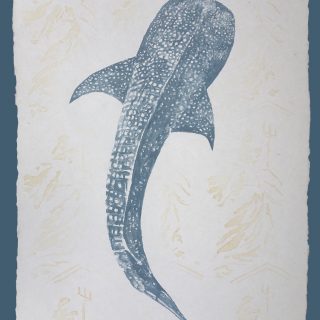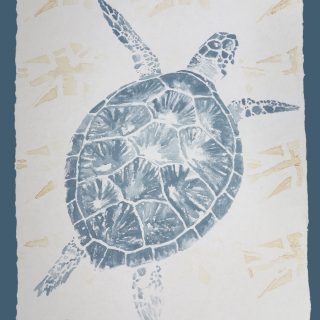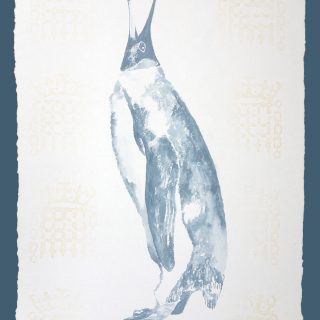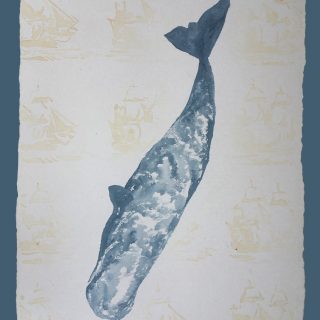The art of politics
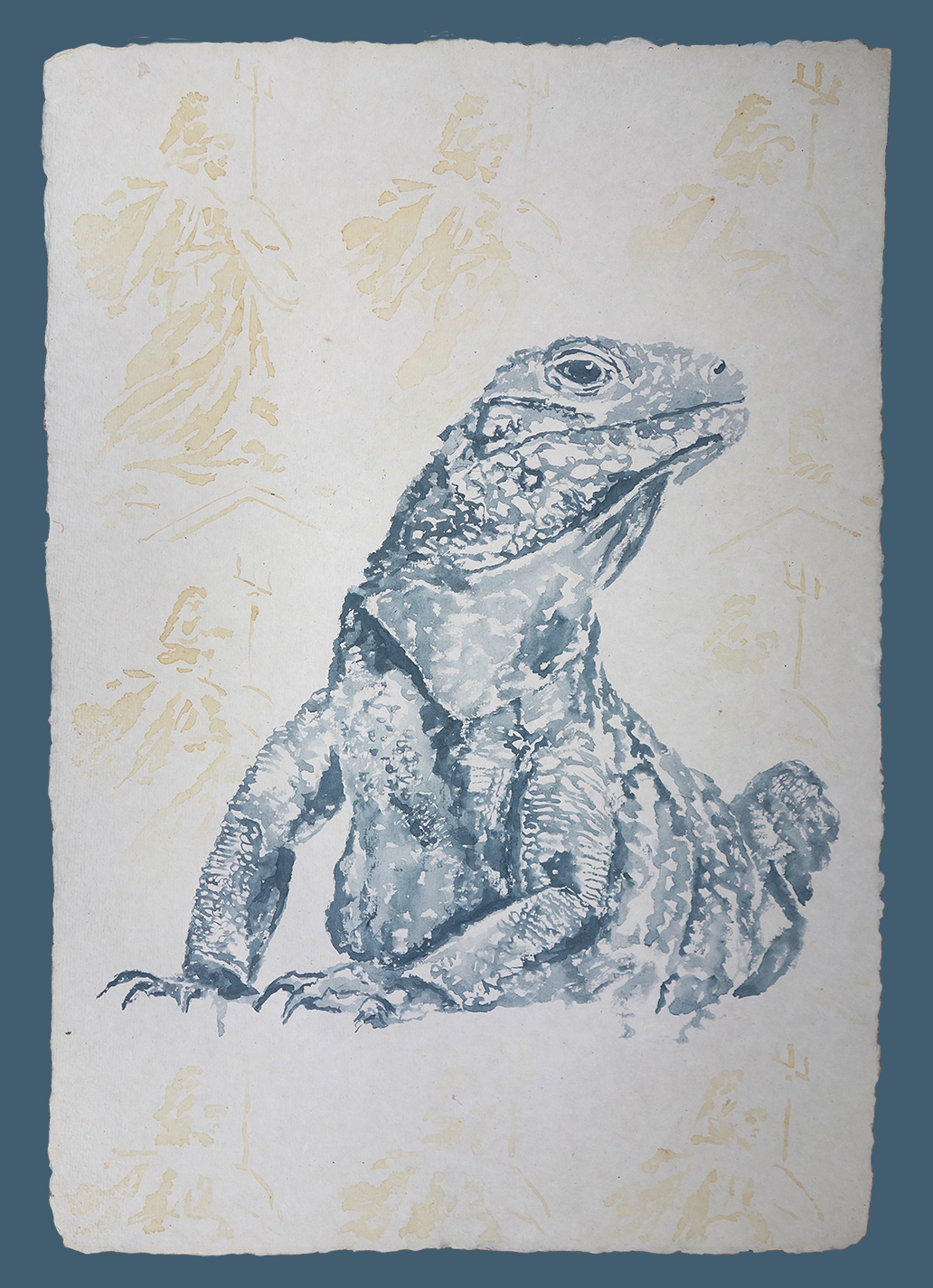
The Art of Politics: Representing Sustainability Challenges in the UK’s Overseas Territories
Exeter-based artist Naomi Hart’s paintings represent the rich yet threatened marine and terrestrial biodiversity of Britain’s overseas territories. Experts estimate that 90% of all the species for which the UK is responsible are located in the fourteen territories. This wealth of biodiversity and the often-fragile habitats they depend on are at risk from climate change, invasive species, inappropriate development, natural disasters, over-fishing and pollution.
Many overseas territories are small islands and remote from the UK. Their residents do not have representation in the UK Parliament and most territories have their own governance structures. This political and geographical distance from the UK means they have sometimes been ‘out of sight, out of mind’ to UK policymakers. Yet their constitutional connection to the UK as non-independent territories entails ongoing responsibilities, political entanglements and sometimes-difficult colonial legacies.
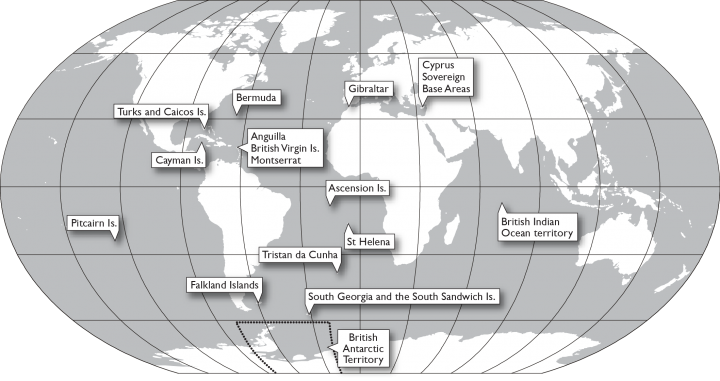
Figure 1. map of the UK overseas territories
The paintings in this exhibition developed out of a collaboration between Naomi and human geographer Nichola Harmer (University of Plymouth), whose research focuses on the relationship between Britain and the UK overseas territories. The project used Hansard official records of parliamentary debate over the past decade to visualise how UK parliamentarians imagine, articulate and respond to environmental issues in Britain’s overseas territories.
The aim was for the art to evoke emotional responses to environmental concerns, and help bring into view political and spatial connections and influences often obscured by distance or abstraction. Naomi’s paintings represent the unprecedented awareness and foregrounding in parliamentary debate of the wealth of and threats to biodiversity in the overseas territories. They represent many Parliamentarians assertions of the responsibilities of the UK to help the territories protect their environments through programmes and initiatives including the Blue Belt marine protection programme. The paintings also allude to some of the sensitive colonial legacies, continuing constitutional entanglements and power relations involved in state/territory environmental governance.
Nichola Harmer 2019
Indigo and Limes
The paper is eco-friendly, hand-made, cotton rag paper from India. The paint is lime juice and hand-made, genuine indigo watercolour paint, diluted with seawater.
Indigo is the colour of the ocean, and intimately linked to ships and the maritime world. It is made from the plant Indigofera tinctoria, originally found in India but traded around the world. It was cultivated in the Cayman Islands for the dye and is now naturalised. The colour blue also represents wealth, as it was always an expensive colour to produce. The wealth of our oceans contrasted or compared with material wealth, perhaps.
Citrus juice is known as a simple ingredient for making secret ink. Invisible until heated, the message only becomes clear gradually and this could be seen as a metaphor for global warming. The discovery that ascorbic acid prevented scurvy was one of the most influential factors in naval history, and is said to have been instrumental in the British defeat of Napoleon. The admiralty of the British navy switched from European lemons to more expensive West Indian limes, farmed on British plantations, giving birth to the term ‘Limey’. It was a patriotic but misguided act, as limes contain 40% less ascorbic acid than lemons.
The Latin noun ‘limes‘ had a number of different meanings, among them a boundary line or marker, and was used after the 3rd century AD to mean a military district. Our word ‘limit’ derives from this root.
Individual species found in the overseas territories here represent the biodiversity found throughout the territories. The background images (ships, Britannia, the Union Jack, the logos of the Houses of Parliament) represent the history of the territories, and its underlying strategic importance, which forms part of any discussion over representation and influence in the politics of the islands. The images attempt to reflect the sometimes multiple meanings behind parliamentary rhetoric – the protection of wildlife versus the maintenance of global influence.
The sustainability and fragility of the materials also speaks of the fragility of the environment and the level of responsibility that is required to protect and enhance the biodiversity and environments in the overseas territories.
Naomi Hart 2019
The collaboration was funded by Creative Associates, University of Plymouth.
Blogpost One: Dr Nichola Harmer
An innovative collaboration between artist Naomi Hart and human geography lecturer Dr Nichola Harmer is exploring creative ways of representing sustainability challenges in the United Kingdom’s overseas territories.
The project, which is funded by the Sustainable Earth Institute’s Creative Associate scheme, involves analysing and communicating Parliamentary debate on marine conservation, biodiversity and climate change in the overseas territories.
The UK’s fourteen overseas territories, which are hugely diverse and include many remote islands, are estimated to contain over ninety percent of the combined UK and UK overseas territories’ biodiversity. They include globally significant habitats such as coral reefs, polar environments and tropical forests. Ascension Island in the Atlantic is an internationally important breeding site for green turtles and the Ascension Island frigate bird; Gough Island in the South Atlantic hosts significant numbers of penguins and other seabirds and the oceans around many of the overseas territories support recovering populations of whales, sharks and dolphins.
UK Parliamentarians from across the political divide have pushed for greater recognition of these important habitats and have urged the UK government to do more to support sustainability in the territories. This includes the UK Government’s Blue Belt programme, which has established marine protection areas in the oceans around several overseas territories.
Over spring and early summer 2019 Devon-based Naomi Hart will be working with Dr Nichola Harmer to analyse and interpret parliamentarians’ discussion of climate change, biodiversity and coral reefs in the overseas territories. Naomi will then create artistic representations of the findings, which will be exhibited later this summer.
It is hoped the art works will raise wider awareness of the sustainability issues in the overseas territories and the role of the UK in responding to these issues. The project will also provide a case study regarding the challenges and opportunities for collaborative work between social scientists and artists working on sustainability issues.
